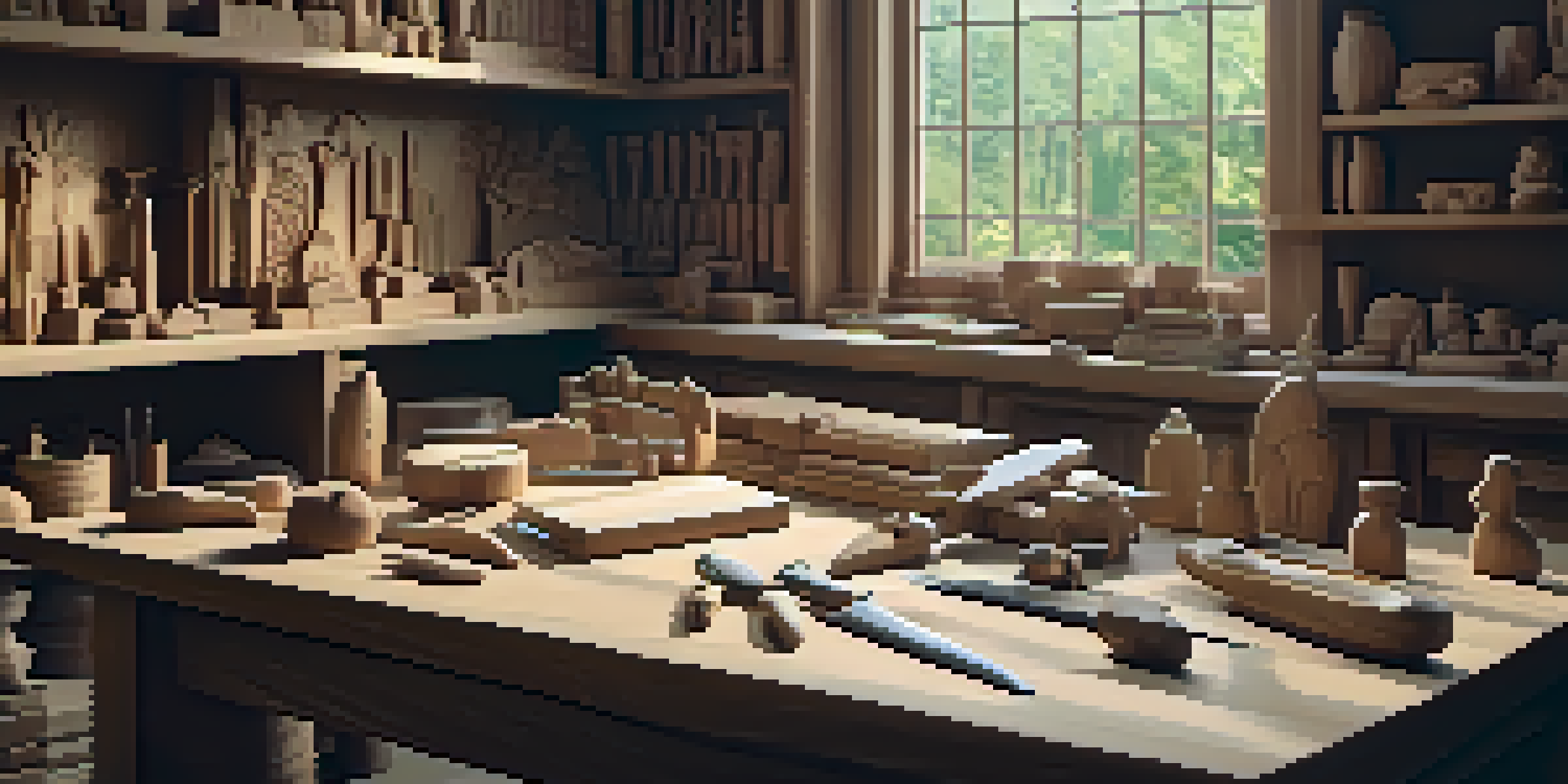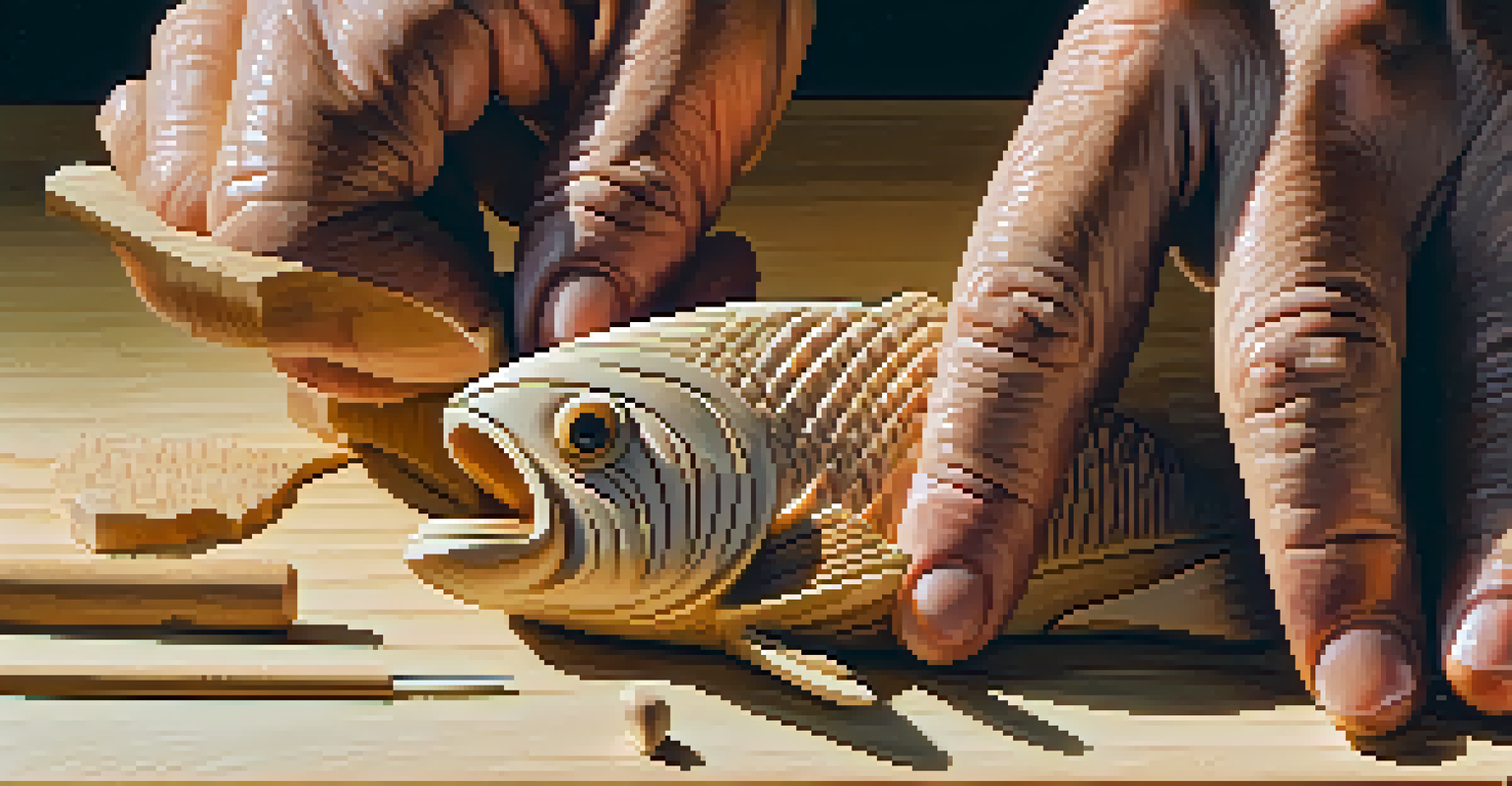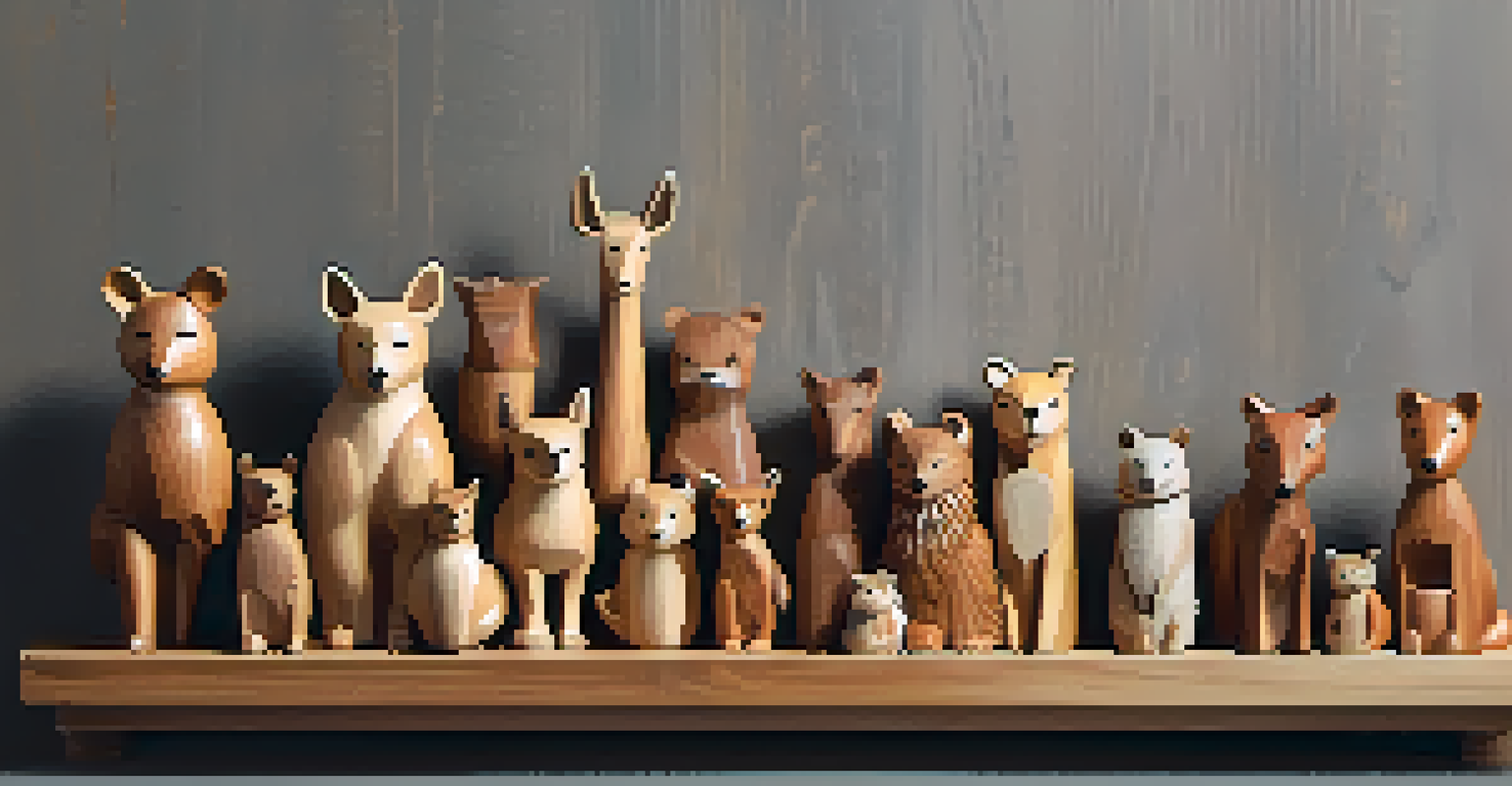Carving Simple Animal Figures: Techniques for Beginners

Understanding the Basics of Wood Carving for Beginners
Before diving into carving simple animal figures, it's essential to grasp the basics of wood carving. Start by familiarizing yourself with the tools, such as knives, chisels, and whittling tools. Each tool has its unique purpose, so understanding their functions will elevate your carving experience.
Every artist was first an amateur.
Choosing the right type of wood is equally important. Softwoods like basswood are ideal for beginners due to their ease of carving and minimal grain. This means you can carve smoother shapes and avoid splintering, which can be frustrating for newcomers.
Lastly, safety should be a top priority. Always carve away from your body and keep your tools sharp to ensure clean cuts. By understanding these foundational aspects, you’ll be better prepared to create delightful animal figures.
Gathering Essential Tools for Animal Figure Carving
Having the right tools can make a world of difference in your carving journey. For simple animal figures, you’ll need a basic set of carving knives, a whittling knife, and some fine-grit sandpaper. Investing in quality tools will not only improve your results but also enhance your overall enjoyment of the craft.

Additionally, consider getting a carving glove for added safety. This simple accessory protects your hands from accidental slips, giving you peace of mind as you focus on your artistry. Remember, a secure grip is crucial for precision.
Mastering Basic Carving Techniques
Familiarizing yourself with fundamental cuts and techniques is essential for shaping your animal figures with precision.
Finally, don’t overlook the importance of a comfortable workspace. A sturdy table and good lighting can significantly improve your carving experience, making it easier to see the details and work efficiently.
Choosing Your First Animal Figure to Carve
Selecting the right animal figure to carve is a great way to kickstart your carving journey. Start with simple designs like a bird or a fish, as they often feature fewer intricate details. This approach allows you to build confidence without feeling overwhelmed.
The only way to do great work is to love what you do.
You can find numerous online tutorials and templates that guide you through the process of carving specific animals. These resources are invaluable for beginners, as they provide step-by-step instructions and visual aids to help you along the way.
Moreover, consider sketching your chosen animal figure on paper before transferring it to wood. This planning phase can help you visualize the final product and make any necessary adjustments before you begin carving.
Basic Carving Techniques for Simple Animal Figures
Once you’ve chosen your animal figure, it’s time to familiarize yourself with basic carving techniques. Start with simple cuts, such as push cuts and pull cuts, which are fundamental to shaping your figure. Practicing these cuts on scrap wood can help you develop control and confidence.
Another technique to explore is the stop cut, which helps define edges and separate different parts of your animal. By making a shallow cut along the line of your design, you create a guide for your subsequent cuts, ensuring precision.
Choosing the Right Tools
Having quality carving tools and a safe workspace greatly enhances your overall carving experience and results.
Remember, patience is key when carving. Take your time with each cut, and don’t be afraid to step back and assess your progress. This mindful approach not only enhances your skills but also makes the process more enjoyable.
Sanding and Finishing Your Carved Animal Figures
After carving your animal figure, sanding is essential to achieve a smooth finish. Begin with coarse sandpaper to remove any rough edges, then gradually move to finer grits for a polished look. This step can truly transform your piece, making it more visually appealing.
Consider applying a finish to protect your carving and enhance its appearance. Natural oils, such as linseed or mineral oil, can bring out the wood's grain while providing a layer of protection against wear. This not only preserves your work but also adds a beautiful sheen.
Lastly, don’t forget to showcase your creation! Whether it’s placing it on a shelf or gifting it to a friend, sharing your carved animal figure can be incredibly rewarding and inspire others to explore the craft.
Common Mistakes Beginners Make and How to Avoid Them
As a beginner, it’s natural to make mistakes during the carving process. One common error is rushing through the cuts, which can lead to uneven shapes or accidents. Take your time and allow yourself the space to learn and improve with each carving session.
Another mistake is not planning adequately before starting. Jumping straight into carving without a clear design can result in frustration. Always sketch your design and visualize the steps required to achieve your desired outcome.
Planning and Patience Are Key
Taking the time to plan your design and practicing patience during the carving process can help you avoid common mistakes.
Lastly, many beginners underestimate the importance of tool maintenance. Dull tools can make carving tedious and increase the risk of injury. Regularly sharpen your tools and keep them clean to ensure a smoother and safer carving experience.
Resources for Further Learning in Animal Carving
As you continue your journey in carving simple animal figures, consider exploring various resources for further learning. Online platforms like YouTube offer countless tutorials that can guide you through more complex techniques and projects. Watching experienced carvers can provide insights that books sometimes can’t convey.
Additionally, joining a local carving club or community can be extremely beneficial. Engaging with fellow enthusiasts allows you to share tips, gain feedback, and even participate in group projects. This sense of community can motivate you and enhance your skills.

Lastly, don't forget about books and guides dedicated to wood carving. Many authors share their expertise, providing detailed instructions, patterns, and troubleshooting advice that can help you elevate your craft.